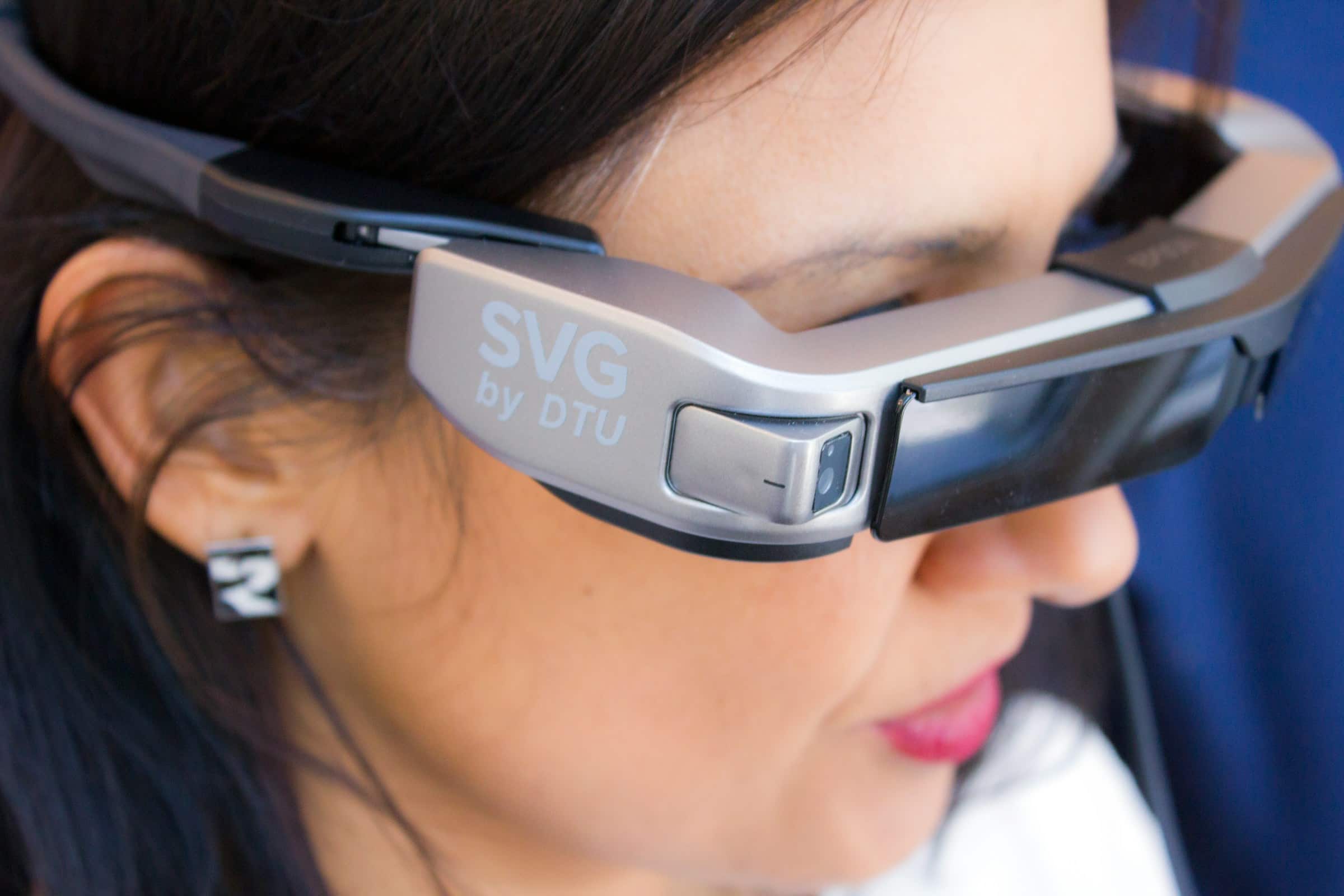Reading, a simple yet crucial skill, can be a daunting task for some. Among them, dyslexic students often find it challenging to process written words, causing them to struggle with reading, writing, and learning. However, the advent of technology has brought promising solutions that aim to enhance the reading experience for dyslexic users. One such innovation is the use of smart glasses, which might revolutionise the way dyslexic individuals interact with text.
Understanding Dyslexia and Its Impact on Learning
Before delving into the subject of smart glasses and their potential benefits for dyslexic users, it is essential to understand what dyslexia entails. Dyslexia is a learning disorder that affects a person’s ability to read, write, and spell. Despite having normal or above-average intelligence, individuals with dyslexia may struggle with decoding words, which can lead to difficulties in comprehending text and hinder their academic progress.
In parallel : How to Implement a Community-Based Circular Economy in UK Towns?
Dyslexia is not merely a scholar challenge; it can affect individuals throughout their life. It can impact their self-esteem, motivation, and social interactions. Dyslexic students often require additional assistance and personalised treatment plans to cope with their learning difficulties.
Assistive Technologies for Dyslexia: An Overview
In an era where technology is flourishing, it offers a myriad of innovative solutions to circumvent the challenges posed by dyslexia. Assistive technology can play a pivotal role in supporting dyslexic students in their learning journey. From text-to-speech software to spell-check tools, these technological advancements can help dyslexic individuals manage their learning disorder and enhance their reading and writing skills.
This might interest you : What’s New in the Development of Virtual Reality for Historical Education?
One such promising technologic intervention is the use of smart glasses. These high-tech wearable devices integrate digital information with the user’s physical environment, providing a virtual overlay that can transform the way dyslexic users interact with text.
How Smart Glasses Can Be Beneficial for Dyslexic Users
Smart glasses, with their advanced features, can potentially revolutionise the reading experience for dyslexic users. They can be programmed with software that manipulates text to make it easier for dyslexic users to process. For instance, the glasses can alter the font, size, and spacing of the text, which can significantly improve readability for dyslexic users.
Moreover, some smart glasses utilise the crossref technology, a system that uses color differentiation to help dyslexic users differentiate between similar-looking letters and words. This approach, often termed as the ‘green word method’, can boost reading speed and comprehension for dyslexic individuals.
In addition, these glasses can incorporate text-to-speech technology. This tool converts written text into spoken words, allowing users to listen to what they are reading, which can enhance comprehension for dyslexic users.
The Role of Companies like Google in Developing Assistive Technology
Big technology companies like Google are taking the lead in developing advanced assistive technologies. Google Glass, for instance, has been redesigned with features to assist dyslexic users. The device uses Optical Character Recognition (OCR) technology to convert written text into digital data, which is then translated into audio.
Google is also investing in AI and machine learning to further improve the efficacy of their assistive tools. For instance, their AI can now predict the difficulty level of a text based on the individual’s reading ability, allowing for a more tailored reading experience for dyslexic users.
The Future of Online Learning with Smart Glasses
With the majority of students now learning online due to the global pandemic, smart glasses can serve as an invaluable tool for dyslexic students. They can facilitate a more inclusive online learning environment by providing personalised reading assistance to dyslexic students, helping them keep pace with their peers.
Moreover, smart glasses can also help dyslexic individuals in their daily life activities. For instance, the glasses can read out loud labels, instructions, or directions, making it easier for dyslexic users to navigate their environment.
While the potential benefits of smart glasses for dyslexic users are immense, they are not without their challenges. Privacy concerns, cost, and access to such high-tech devices are potential hurdles that need to be addressed to make this technology widely accessible to all dyslexic individuals.
Nevertheless, the advent of smart glasses signals a hopeful future for dyslexic users. These devices aim to break the barriers of conventional learning methods, closing the gap between dyslexic students and their non-dyslexic peers. With continuous research and advancements, it will not be surprising if these smart glasses become a standard tool in the toolkit of dyslexic learners, revolutionising their reading experience and changing the face of dyslexic education.
The Intersection of Virtual Reality and Assistive Technology for Dyslexics
Virtual reality (VR) is another technological innovation that is making strides in the realm of assistive technology. VR, when paired with smart glasses, can create a highly immersive and interactive reading environment, tailored to the needs of dyslexic users.
Unlike traditional reading methods, VR can create personalized, three-dimensional learning environments that can significantly enhance the reading experience for people with dyslexia. A primary advantage of VR is that it allows users to manipulate their learning environment, which can make learning a more engaging and enjoyable experience, thereby boosting motivation and self-confidence among dyslexic users.
For instance, VR coupled with smart glasses can create a “dyslexia-friendly” environment, where text can be manipulated in various ways – change of font, size, and color – to make it easier to read. It can also create virtual scenarios where users can practice reading and writing in a controlled, stress-free environment, reducing the anxiety often associated with these tasks.
Moreover, VR can potentially enhance word decoding skills and improve word reading fluency among dyslexic users. This can be achieved by creating virtual games that focus on improving the specific cognitive abilities that underpin reading skills, such as phonological awareness and visual processing.
While the intersection of VR and assistive technology is still in its nascent stages, initial research indicates promising outcomes. According to a study referenced on Google Scholar and indexed on PubMed and Crossref, dyslexic students who used VR-based interventions showed significant improvement in their reading skills compared to those who used traditional methods.
Yet, as with any form of technology, the use of VR in special education needs to be carefully executed. While it can open a separate window of opportunity for dyslexic users, it is important not to over-rely on it and neglect the development of other key skills.
Conclusion: The Potential of Smart Glasses and Future Directions
The advent of smart glasses, combined with advancements in assistive technology, presents a promising future for dyslexic users. These devices have the potential to fundamentally change the way dyslexic individuals interact with text, making reading a more accessible and enjoyable experience.
At the heart of this change is the ability of smart glasses to customize the reading experience. Whether it’s changing the appearance of the text, using color differentiation to distinguish between similar-looking letters, or converting text to speech, these high-tech devices can cater to the specific needs of dyslexic users.
Moreover, with the emergence of virtual reality in the field of assistive technology, the potential for smart glasses is even greater. Virtual reality can create a highly immersive and engaging reading environment, thereby enhancing reading fluency and comprehension among dyslexic users.
However, the widespread application of smart glasses in the field of dyslexia is not without its challenges. Issues such as privacy, cost, and access to technology need to be addressed to ensure this technology is accessible to all dyslexic individuals. On the 22nd of March, 2024, we stand on the threshold of a new era in dyslexic education, powered by the potential of smart glasses.
A collaborative effort involving educators, technology developers, and policymakers is required to make these assistive tools a standard feature in the toolkit of dyslexic learners. With continuous research and advancements, smart glasses have the potential to transform the face of dyslexic education, paving the way for an inclusive and equitable learning environment. The road ahead is promising, and the future looks bright for dyslexic users.











